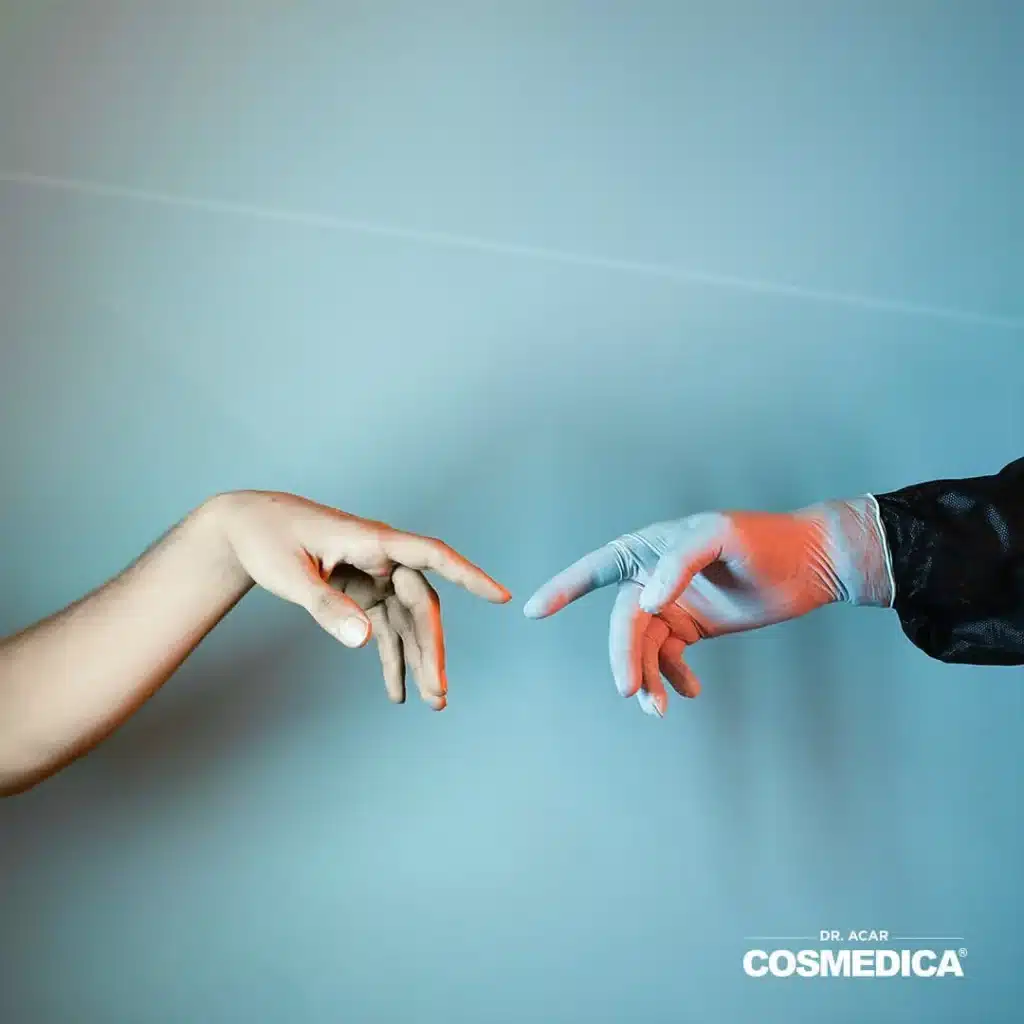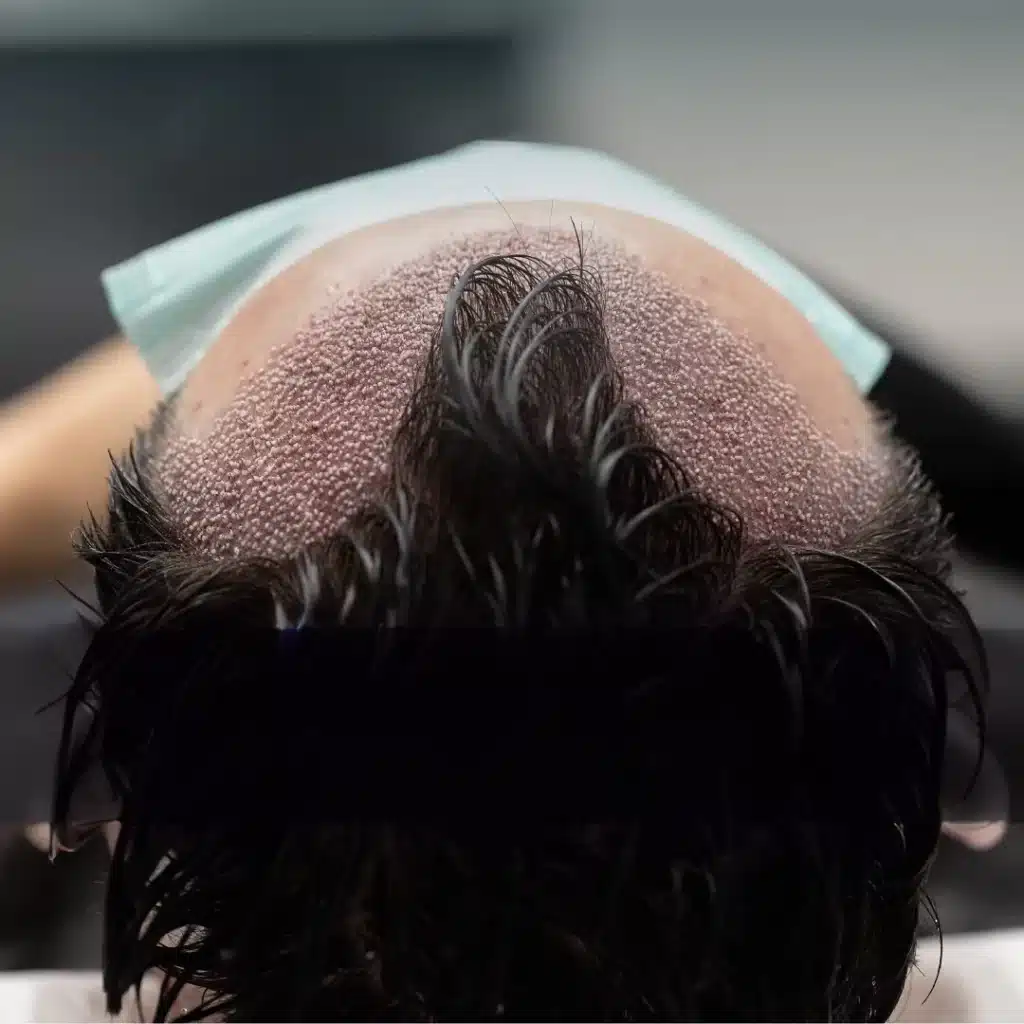At Cosmedica, we pride ourselves on providing an honest and caring atmosphere. Featured here are some of our patients’ before and after results.
Watch famous actor Keiran Lee’s journey for his hair implants in Istanbul and discover the stunning before-after results of his hair transplant in Turkey at Cosmedica Clinic.
Total Transformation: Before and After Pictures of Our Patients
Have a look at the before and after pictures and the results we have achieved at our hair clinic. You can sort the images by the amount of grafts that were transplanted to get a rough idea of how many grafts you might need.
How Do We Achieve These Fantastic Results?

At Cosmedica Clinic, we tailor an individual approach to each of our patients’ hair situation. To get as close as possible to your appearance before hair loss set in, we look at old photos and make a judgment about the prospects for future hair loss.
If a hair transplant procedure is carried out too soon and follicular units are implanted between still existing hair groups, the hair transplant might not be a permanent solution as the original hairs can fall out between the transplanted hair.
Therefore, we will carry out a microscopic analysis of your hair density. We can determine the number of hair follicles in the donor area available for transplantation and decide what the most appropriate hair transplant method for optimal results is. We always make sure not to overharvest the donor area in case you might want or need another hair transplant in the future.
We can achieve particularly natural results and hair growth by creating a strong definition for the front hairline. Dr. Acar is a master of the FUE hair transplant alongside the newer Micro Sapphire DHI method. He is able to achieve the best results with the latest techniques and methods in the field of hair restoration.


The results of a hair transplant surgery of course vary from person to person. Aside from the individual reaction that everybody’s scalp has to hair transplant surgery, it also depends on the initial hair situation. If hair follicles are implanted inbetween still existing hair, the non-transplanted hair might fall out with time as it’s still sensitive to the harmful effects of dihydrotestosterone.
An important aspect of a high quality hair transplant is that the surgeon should replicate the natural angle of growth of the hair follicles. This can only be done by skilled surgeons using the most precise modern tools.
At your personal consultation with Dr. Acar, you will discuss the number of grafts that you need, and he will set your future hairline. You can see in the pictures here how we have set the hairline for our past patients. We do this in consultation with you; we are experienced in deciding exactly the right hairline for natural-looking hair but we also consider your personal preference.
What Is the Best Age for a Hair Transplant?
The best age for a hair transplant can vary from person to person and depends on several factors. Generally, good candidates for hair transplants are individuals who have experienced significant hair loss and have stable donor areas from which hair can be harvested for transplantation. Here are some considerations:
Stable hair loss: The best candidates for a hair transplant are those who have stabilized their hair loss. This means that their hair loss has significantly slowed down, and they are not experiencing rapid or severe hair thinning. It’s important for the pattern of hair loss to be well-established before undergoing a transplant.
Age range: While there isn’t a specific age that is considered “best” for a hair transplant, many experts suggest that individuals in their late 20s to 50s are often good candidates. This is a range where hair loss patterns have usually become clear, and the donor hair is still in good condition.
Individual assessment: Each person’s hair loss is unique, and a thorough assessment by a qualified hair restoration specialist is crucial. They will consider factors such as family history of hair loss, current hair loss pattern, donor hair availability, and overall health to determine if the individual is a suitable candidate.
Future hair loss: It’s important to consider the potential for future hair loss. A hair transplant redistributes existing hair to balding or thinning areas. If hair loss continues, more procedures may be needed to maintain a consistent appearance, as the loss of non-transplanted hair continues.
Consultation: The best way to determine if you’re a suitable candidate for a hair transplant and the optimal timing is to have a consultation with a qualified hair restoration specialist. They can evaluate your specific situation and provide personalized recommendations.
Are Hair Transplants Worth It?
Whether a hair transplant is worth it depends on your individual circumstances, goals, and expectations. Hair transplants can be a highly effective and life-changing solution for individuals struggling with hair loss, but it’s essential to consider a few factors before making a decision:
Impact on self-esteem: Hair loss can have a significant impact on self-esteem and confidence. A successful hair transplant can help restore a natural hairline and boost self-confidence, leading to improved overall well-being.
Long-term solution: Hair transplants are generally a long-term solution. Once the transplanted hair takes root, it is resistant to genetic hair loss and can be treated, styled, and maintained like natural hair.
Natural-looking results: Advanced techniques, such as Follicular Unit Extraction (FUE) and Direct Hair Implantation (DHI), offer natural-looking results with minimal scarring.
Financial investment: Hair transplants can be a financial investment, and the cost can vary depending on factors such as the extent of hair loss and the number of grafts required. It’s important to weigh the cost against the potential benefits and long-term value.
Realistic expectations: It’s crucial to have realistic expectations about the outcome of a hair transplant. While it can significantly improve the appearance of your hair, it may not provide a full head of hair comparable to your hair in your youth.
Consultation with a specialist: Consulting with a qualified hair restoration specialist is essential. They can assess your specific situation, discuss your goals, and provide personalized recommendations based on your needs.
How Long Does Transplanted Hair Last?

Hair transplants are generally considered to be a long-lasting solution for hair loss. The transplanted hair is taken from areas of the scalp that are not prone to genetic hair loss, such as the back or sides of the head (the so-called donor area), and is therefore resistant to the harmful effects of dihydrotestosterone, which causes hair thinning and baldness. As a result, the transplanted hair can last a lifetime.
The timeline for seeing full results from a hair transplant can vary. After the procedure, the transplanted hair will typically shed within a few weeks. However, new hair growth should begin within a few months. It usually takes around 8 to 12 months to see the full and final results of a hair transplant.
Once the transplanted hair has fully grown in, it can be treated and styled just like natural hair. Following the advice of your hair restoration specialist in the crucial first few weeks after surgery can help ensure that your transplanted hair remains healthy and continues to look natural for years to come.
It’s important to have realistic expectations about the results of a hair transplant. While the transplanted hair is more resistant to hair loss, it’s still possible that hair loss may continue over time in areas of the scalp that were not treated. However, the overall effect of a successful hair transplant can significantly improve the appearance and density of the hair, boosting your confidence and self-esteem for many years.

Frequently Asked Questions
Our representatives for 19 countries are available 24/7.
How long after hair transplant do you see results?
Most patients see results between 6 and 12 months after the hair transplant.
It has been 6 months since my hair transplant and I've yet to see results, why?
Please give it a bit more time. Hair growth depends on a lot of things, and some people simply have to wait longer than others
What is the success rate of a hair transplant?
The success rate of a hair transplant is influenced by many factors and as such, it is impossible to give an absolute number. However, it is safe to say that on average at least 90% of the transplanted hair grafts will survive. This number can go as high as 100%, depending on the practising surgeon, their expertise, and their toolkit.
How many grafts can be transplanted in one session?
We can transplant up to 3500 grafts in a single session (one day).
Do you offer a guarantee for the hair transplantation?
We trace the progress of the result and ensure that you get the planned result.
How many grafts do I need?
The most important aspect of any hair transplant treatment is knowing how many hair grafts will be needed for the procedure. During the consultation, your surgeon will carefully examine your hair loss and state how many grafts will suffice for the treatments. The number of grafts you need will depend on how severe your condition is. Frontal hair loss may require just 2,500 grafts, while more extreme cases may call for 3,000 grafts or more.
Hair health may also influence the number of grafts needed. Your surgeon will extract your hair as grafts. Each graft contains about 1 to 4 strands of hair, depending on how thick/healthy the individual’s hair is. So for someone with healthy hair, 2000 grafts may suffice for an operation, while 2500 grafts may be extracted for not-so-healthy hair.
How many grafts are needed for a full head of hair?
If you are suffering from total baldness, you’ll need a hair transplant operation to implant hair on your entire head. For a full head hair transplant, you’ll need between 4,000 and 6,000 grafts. Remember that hair quality varies, so if your donor area hair is of high quality, then 4,000 grafts will do the job. But if your donor area hair is of low quality, your surgeon may extract 5,000 or 6,000 grafts for the job.
However, despite this estimation, the actual number of grafts extracted will depend on some other factors. For instance, your surgeon must extract just enough hair from the donor area so the site doesn’t get damaged and become bald. This is why it’s best to leave the math to your surgeon.
Can your body reject a hair transplant?
Unlike organ transplants, a hair transplant is performed with your own hair. As such, your body has no reason to reject the transplant. It does not consider the hair grafts a foreign object.
Request a free consultation
Please contact us for your questions about hair transplantation in Turkey or to receive a free assessment for your hair loss. Our team of highly trained experts will provide you the necessary information.
Get an analysis and consultation with one of our hair transplant specialists.
